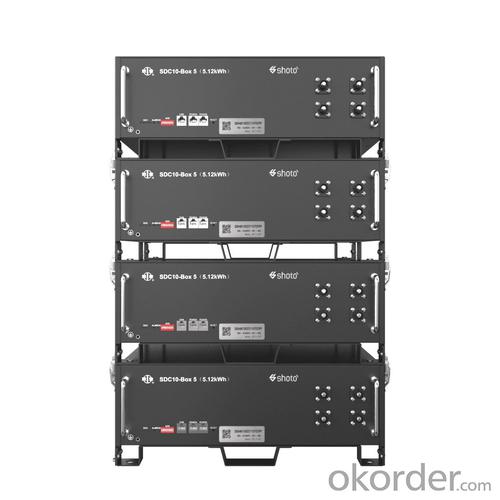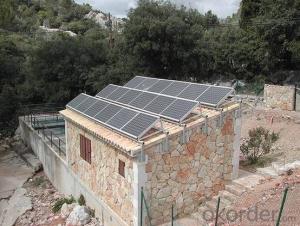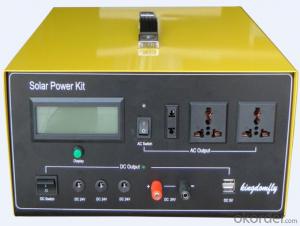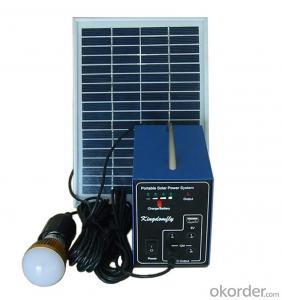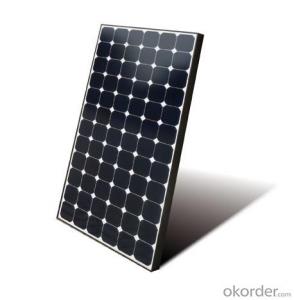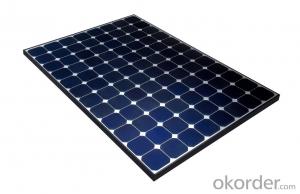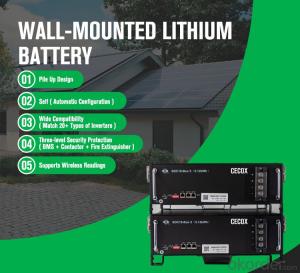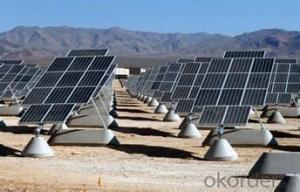Solar Energy Systems Skagit UL Certificate 5.12kwh Shoto 51.2V 100Ah 6000 Cycles @80% DOD 5 Years Warranty Lithium Battery
- Loading Port:
- SHANGHAI
- Payment Terms:
- TT OR LC
- Min Order Qty:
- 50 set
- Supply Capability:
- 5000 set/month
OKorder Service Pledge
Quality Product, Order Online Tracking, Timely Delivery
OKorder Financial Service
Credit Rating, Credit Services, Credit Purchasing
You Might Also Like
Specification
Application:
Home
Output Voltage (V):
51.2v
Introduction:
Solar energy preferably used by domestic appliances, and additional Energy is stored in battery.
During the day, when battery is fully charged, the additional energy produced by solar can be sold and fed into the public .
At evening, the energy stored in the battery supplies electriciity to the domestic appliances.
At night, when the energy stored in the battery is depleted, the public grid supplies energy to the domestic appliances.
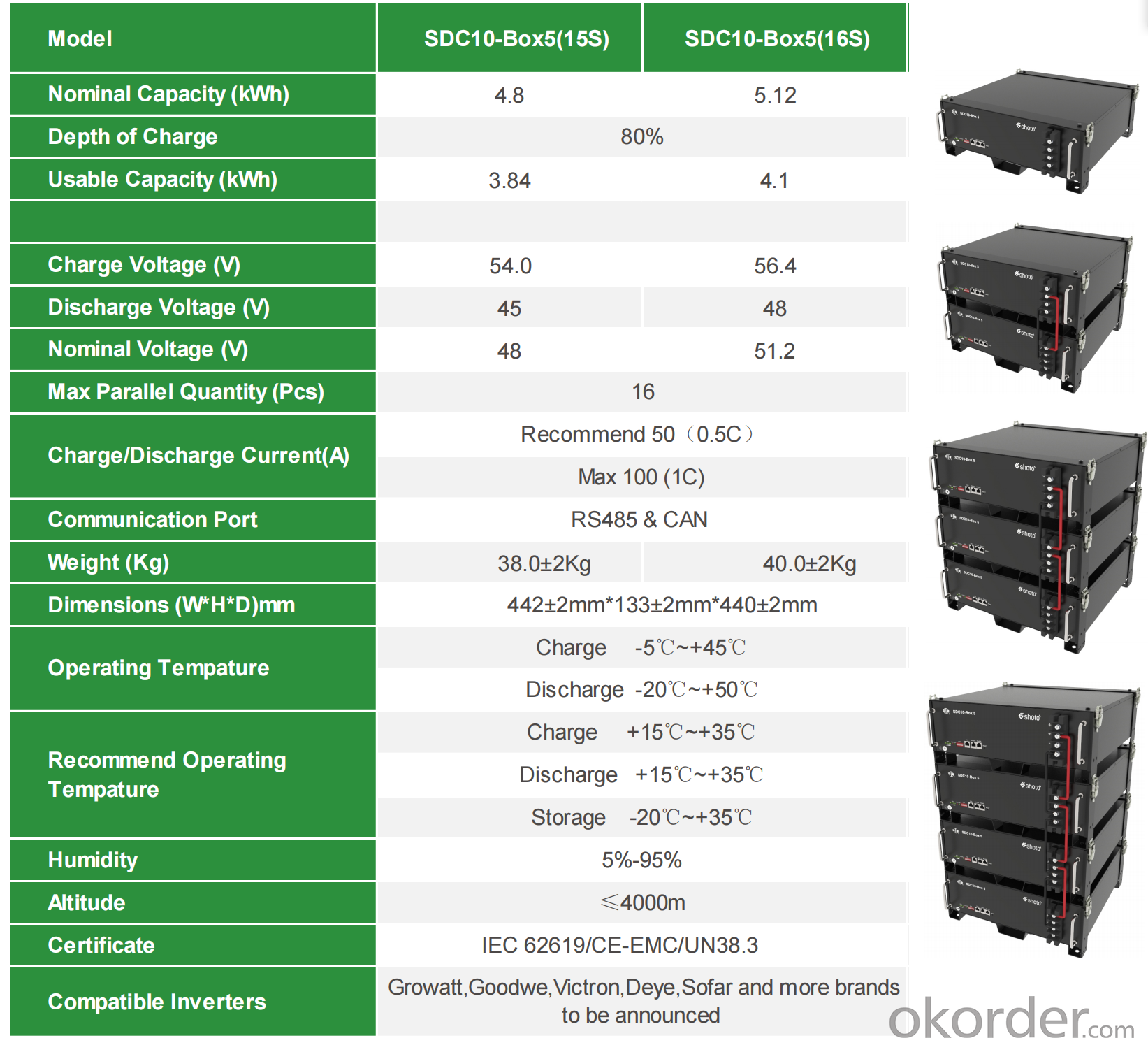
- Q:Can solar energy systems be used for powering air conditioning systems?
- Yes, solar energy systems can be used to power air conditioning systems. Solar-powered air conditioning systems use solar panels to generate electricity, which is then used to operate the air conditioning unit. This helps reduce the reliance on traditional electricity sources and is a sustainable and cost-effective solution for cooling homes and buildings.
- Q:Can solar energy systems be used in areas with high levels of poverty?
- Yes, solar energy systems can be used in areas with high levels of poverty. In fact, solar energy can play a crucial role in alleviating poverty and improving the living conditions of people in these areas. Here are a few reasons why solar energy systems are viable in poverty-stricken areas: 1. Cost-effectiveness: Solar energy systems have become increasingly affordable over the years, making them a viable option for economically disadvantaged communities. Once installed, solar panels can generate electricity without any recurring costs, reducing the burden on families struggling to pay for conventional energy sources. 2. Energy independence: Solar energy systems provide a decentralized and local source of electricity, allowing communities to become self-reliant and less dependent on the centralized power grids. This independence empowers people in poverty to access reliable electricity, improving their quality of life and enabling economic activities such as small-scale businesses. 3. Environmental sustainability: Solar energy is a clean and renewable source of power, which helps protect the environment in poverty-stricken areas. These regions often lack access to modern infrastructure, leading to a heavy reliance on fossil fuels, such as kerosene lamps or diesel generators, which contribute to pollution and health problems. Solar energy systems offer a sustainable alternative, reducing carbon emissions and improving air quality. 4. Job creation and economic development: The installation and maintenance of solar energy systems create employment opportunities within the local community. This job creation can stimulate economic growth and improve the financial prospects of individuals living in poverty. Moreover, solar energy can be harnessed for productive purposes, such as powering irrigation systems, small-scale manufacturing, or water purification, further contributing to poverty reduction. 5. Humanitarian aid initiatives: Various organizations and governments are actively involved in implementing solar energy projects in impoverished areas. These initiatives focus on providing solar power to schools, hospitals, and community centers, ensuring access to education, healthcare, and communication facilities. By addressing these basic needs, solar energy can uplift communities and enable them to break the cycle of poverty. In conclusion, solar energy systems have the potential to be used effectively in areas with high levels of poverty. The affordability, energy independence, environmental sustainability, job creation, and humanitarian aid aspects make solar energy an ideal solution for improving the lives of people living in poverty-stricken areas.
- Q:Can solar energy systems be used in areas with high levels of dust or dirt?
- Yes, solar energy systems can be used in areas with high levels of dust or dirt. However, excessive accumulation of dust or dirt on solar panels can reduce their efficiency. Regular cleaning and maintenance of solar panels are essential to ensure optimal performance in such areas.
- Q:What is the impact of snow on the performance of solar panels?
- Snow can have a significant impact on the performance of solar panels. When snow covers the surface of the panels, it obstructs sunlight from reaching the photovoltaic cells, reducing the panels' efficiency in generating electricity. As a result, the electricity output of the solar panels can be significantly reduced or even completely halted during heavy snowfall. The accumulation of snow on solar panels also adds extra weight and can potentially damage the panels if they are not designed to withstand heavy loads. Additionally, the presence of snow on the surface of the panels can lead to uneven melting, which can cause water to seep into the panels and potentially cause damage to the electrical components. To mitigate the impact of snow on solar panels, various strategies can be employed. One common method is to install the panels at an angle that allows snow to slide off the surface more easily. Additionally, some solar panels are designed with special coatings or materials that prevent snow from sticking to the surface. Heating elements can also be incorporated into the panels to melt the snow and prevent accumulation. Overall, while snow can pose challenges for solar panels, proper design, installation, and maintenance can help minimize the impact and ensure optimal performance even in snowy conditions.
- Q:How do solar energy systems impact energy storage technologies?
- Solar energy systems have a significant impact on energy storage technologies by creating a need for efficient and reliable storage solutions. As solar power generation is intermittent and dependent on weather conditions, energy storage technologies are crucial for storing excess energy produced during peak periods and releasing it during periods of low or no sunlight. This demand has driven advancements in energy storage, leading to the development of more efficient and cost-effective solutions like batteries and pumped hydro storage, ultimately enhancing the integration and reliability of solar energy systems.
- Q:Do solar energy systems require a battery for storage?
- No, solar energy systems do not necessarily require a battery for storage. While batteries can be used to store excess energy generated by solar panels for use during times when there is no sunlight, it is not a mandatory component of a solar energy system. Other options for storing excess energy include grid-tied systems, where excess energy can be fed back into the electrical grid, or using net metering arrangements where excess energy is credited and can be used at a later time.
- Q:Can solar energy systems be used in powering wineries or breweries?
- Certainly, wineries and breweries can utilize solar energy systems to effectively power their operations. Indeed, solar power has been widely embraced by many wineries and breweries worldwide as a sustainable and cost-efficient energy solution. These facilities can install solar energy systems on their rooftops or surrounding areas to capture sunlight and convert it into usable electricity. The electricity generated from solar panels can be employed to power various aspects of winemaking or brewing, including lighting, heating, cooling, and machinery. It can also be used for irrigation pumps and ventilation systems, which are critical for maintaining optimal fermentation conditions. By employing solar power, wineries and breweries not only reduce their carbon footprint and dependence on fossil fuels, but also enjoy several financial advantages. Solar energy systems can significantly decrease utility bills, as these establishments typically require a substantial amount of electricity for their operations. Furthermore, certain regions offer incentives and tax credits to businesses that adopt renewable energy sources like solar power. In addition, solar energy systems provide wineries and breweries with energy independence and reliability. These systems can generate electricity even during power outages or peak demand periods when electricity prices are higher. This ensures uninterrupted production and reduces the vulnerability of these facilities to energy shortages or price fluctuations. Overall, the effectiveness of solar energy systems in powering wineries and breweries has been well-documented, offering environmental, financial, and operational benefits. By harnessing the abundant power of the sun, these industries can contribute to a more sustainable future while enjoying the numerous advantages of solar energy.
- Q:Can solar energy systems be used in powering scientific research vessels or marine laboratories?
- Indeed, it is possible to utilize solar energy systems for the purpose of powering scientific research vessels or marine laboratories. Solar energy, being a renewable and sustainable power source, can be harnessed through the utilization of photovoltaic panels or solar thermal collectors. The energy requirements of research vessels and marine laboratories are substantial, given the nature of their operations which involve scientific experiments, data collection, and analysis. These activities usually involve the use of equipment like computers, sensors, and laboratory instruments, which necessitate a continuous and dependable power supply. To address this need, solar energy systems can be installed on said vessels or laboratories, providing a clean and efficient source of electricity. Through the conversion of sunlight into electricity via photovoltaic panels, the various equipment and systems on board can be powered. Moreover, any excess energy produced by the solar panels can be stored in batteries to be utilized during periods of decreased sunlight or at night. The utilization of solar energy in these marine environments presents numerous advantages. Firstly, it diminishes reliance on fossil fuels and diminishes the carbon footprint associated with conventional methods of power generation. This is particularly vital in the context of scientific research as it aligns with the principles of environmental sustainability and conservation. Secondly, solar energy systems offer a reliable and autonomous power source. Research vessels and marine laboratories often operate in remote or secluded locations where access to traditional power grids may be limited or non-existent. By harnessing solar energy, these vessels and facilities can generate their own electricity, enabling them to continue their research activities without depending on external power sources. Lastly, solar energy systems necessitate minimal maintenance and have a lengthy lifespan. Once installed, they require minimal upkeep and are capable of withstanding the harsh marine environment. This makes them highly suitable for use in research vessels or marine laboratories, where downtime and maintenance issues can be disruptive to ongoing scientific projects. In conclusion, there is no doubt that solar energy systems can be effectively employed to power scientific research vessels or marine laboratories. They offer a sustainable, reliable, and autonomous source of electricity, thereby reducing the carbon footprint and ensuring uninterrupted research activities, even in remote locations.
- Q:How do solar energy systems impact the insurance coverage of a home?
- Solar energy systems can have both positive and negative impacts on the insurance coverage of a home. On the positive side, installing solar panels can increase the value of a home, which may result in higher replacement costs in the event of damage or loss. This can lead to higher insurance coverage limits to ensure adequate protection. Additionally, some insurance companies offer discounts or incentives for homeowners who install solar energy systems. These discounts can help offset the cost of insurance premiums and make it more affordable for homeowners to insure their homes. However, there are also potential negative impacts to consider. Solar panels can be vulnerable to damage from natural disasters such as storms, hail, or fire. Depending on the insurance policy, the coverage for such damages may vary. Some policies may include coverage for solar panels as part of the overall structure of the home, while others may require an additional endorsement or separate policy. Another consideration is liability coverage. If a solar energy system causes damage to neighboring properties or injures someone, homeowners may need to ensure they have adequate liability coverage to protect against potential lawsuits. It is important for homeowners to review their insurance policies and consult with their insurance providers before installing solar energy systems. This will ensure that they have the appropriate coverage in place and understand any potential changes or requirements that may affect their insurance premiums or coverage limits.
- Q:How do solar energy systems impact regional economic development?
- Solar energy systems can have a significant positive impact on regional economic development. They create jobs in the installation, maintenance, and manufacturing sectors, stimulating local economies. Additionally, solar energy reduces dependence on imported fossil fuels, thus increasing energy security and decreasing energy costs for businesses and households. This, in turn, frees up funds for investment in other sectors, fostering overall economic growth and development in the region.
1. Manufacturer Overview |
|
|---|---|
| Location | |
| Year Established | |
| Annual Output Value | |
| Main Markets | |
| Company Certifications | |
2. Manufacturer Certificates |
|
|---|---|
| a) Certification Name | |
| Range | |
| Reference | |
| Validity Period | |
3. Manufacturer Capability |
|
|---|---|
| a)Trade Capacity | |
| Nearest Port | |
| Export Percentage | |
| No.of Employees in Trade Department | |
| Language Spoken: | |
| b)Factory Information | |
| Factory Size: | |
| No. of Production Lines | |
| Contract Manufacturing | |
| Product Price Range | |
Send your message to us
Solar Energy Systems Skagit UL Certificate 5.12kwh Shoto 51.2V 100Ah 6000 Cycles @80% DOD 5 Years Warranty Lithium Battery
- Loading Port:
- SHANGHAI
- Payment Terms:
- TT OR LC
- Min Order Qty:
- 50 set
- Supply Capability:
- 5000 set/month
OKorder Service Pledge
Quality Product, Order Online Tracking, Timely Delivery
OKorder Financial Service
Credit Rating, Credit Services, Credit Purchasing
Similar products
Hot products
Hot Searches
Related keywords






